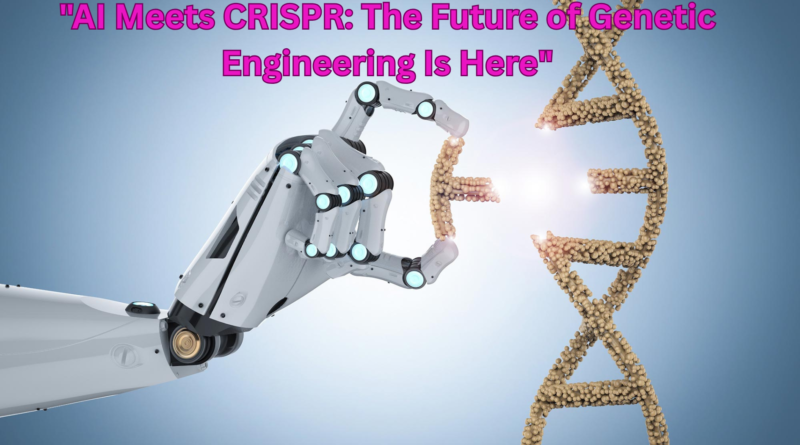“AI Meets CRISPR: The Future of Genetic Engineering Is Here”
The fusion of Artificial Intelligence (AI) and CRISPR gene-editing technology is reshaping the landscape of biotechnology, medicine, and agriculture. CRISPR, a revolutionary tool that allows scientists to edit genes with unprecedented precision, has been greatly enhanced by AI’s ability to analyze massive datasets and identify optimal gene-editing targets. AI models can now predict gene functions, assess off-target effects, and even design CRISPR sequences more efficiently than traditional methods. This synergy drastically reduces the time and resources required for genetic research and opens doors to highly personalized and safe genetic interventions.
One of the most groundbreaking applications of this partnership is in medicine, particularly in the treatment of genetic disorders. For example, AI-assisted CRISPR technologies have been instrumental in the development of the first approved therapy for sickle cell disease, a condition previously considered incurable at the genetic level. AI algorithms can simulate thousands of possible edits in silico to determine which gene sequences will result in the best therapeutic outcome with minimal risk. This combination is also being explored in the fight against cancer, rare diseases, and even in enhancing immune responses.
Beyond healthcare, AI-augmented CRISPR is making a significant impact in agriculture. By accelerating the development of genetically modified crops, scientists are engineering plants that are more resistant to drought, pests, and diseases, which is crucial in the face of climate change and global food insecurity. AI helps identify genes related to desirable traits and guides precise editing, ensuring improved yield and sustainability. As both AI and gene-editing technologies continue to evolve, their combined influence is expected to drive a new era of innovation across multiple scientific domains.




